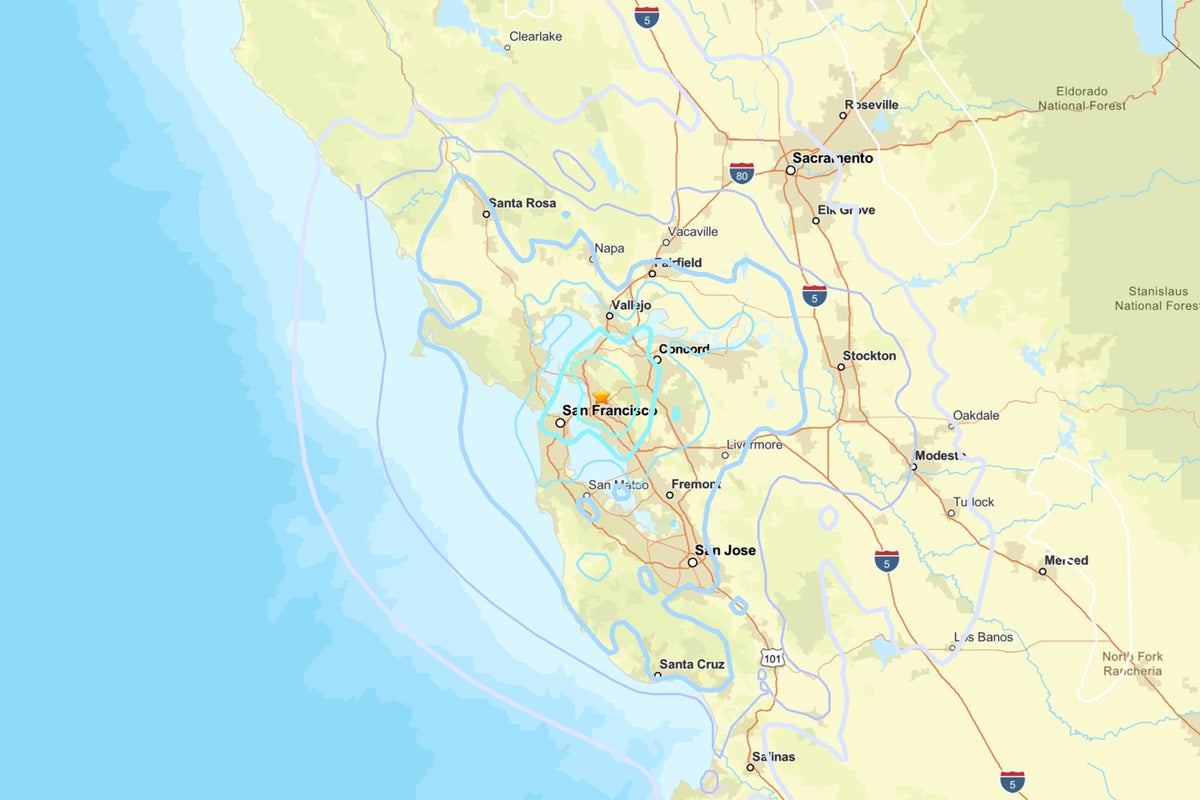San Francisco Rattled by Predawn Earthquake
The San Francisco Bay Area was rattled early this morning by a magnitude 4.3 earthquake along the Hayward fault line
Join Our Community of Science Lovers!
Sleeping residents of California’s San Francisco Bay Area were rattled awake by a magnitude 4.3 earthquake in the early morning hours of September 22.
The earthquake struck 1.25 miles east-southeast of Berkeley, Calif., with shaking felt as far away as Salinas, Calif., about 100 miles to the south, and Chico, Calif., about 150 miles to the north. The temblor does not pose any tsunami threat, according to the National Tsunami Warning Center.
If you’re enjoying this article, consider supporting our award-winning journalism by subscribing. By purchasing a subscription you are helping to ensure the future of impactful stories about the discoveries and ideas shaping our world today.
The earthquake occurred near the Hayward fault line, which runs from the north side of San Francisco Bay to southeast of San Jose. The largest known earthquake on record in the area of this fault was a magnitude 6.8 event in 1868.
Because of its history, the Hayward fault has been carefully watched by scientists, who worry that the now densely populated region could see much more serious damage the next time a very strong earthquake strikes.
So far, nearly 26,000 people have reported feeling Monday’s quake through USGS’s “Did You Feel It?” reporting tool, which gathers on-the-ground data about the intensity and effects of earthquakes. If you are in the Bay Area—whether you felt the temblor or not—you can fill out the agency’s form to contribute to observations.
Meghan Bartels is a science journalist based in New York City. She joined Scientific American in 2023 and is now a senior news reporter there. Previously, she spent more than four years as a writer and editor at Space.com, as well as nearly a year as a science reporter at Newsweek, where she focused on space and Earth science. Her writing has also appeared in Audubon, Nautilus, Astronomy and Smithsonian, among other publications. She attended Georgetown University and earned a master’s degree in journalism at New York University’s Science, Health and Environmental Reporting Program.
If you enjoyed this article, I’d like to ask for your support. Scientific American has served as an advocate for science and industry for 180 years, and right now may be the most critical moment in that two-century history.
I’ve been a Scientific American subscriber since I was 12 years old, and it helped shape the way I look at the world. SciAm always educates and delights me, and inspires a sense of awe for our vast, beautiful universe. I hope it does that for you, too.
If you , you help ensure that our coverage is centered on meaningful research and discovery; that we have the resources to report on the decisions that threaten labs across the U.S.; and that we support both budding and working scientists at a time when the value of science itself too often goes unrecognized.
In return, you get essential news, captivating podcasts, brilliant infographics, , must-watch videos, challenging games, and the science world’s best writing and reporting. You can even gift someone a subscription.
There has never been a more important time for us to stand up and show why science matters. I hope you’ll support us in that mission.
Thank you,
David M. Ewalt, Editor in Chief, Scientific American
Source: www.scientificamerican.com
